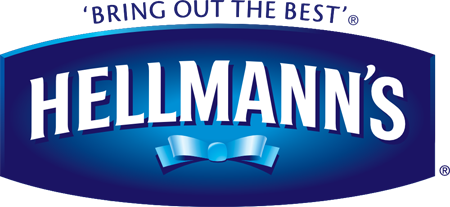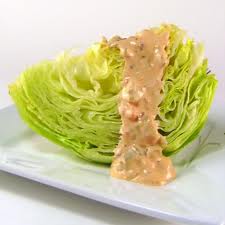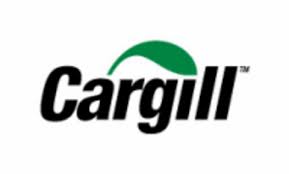Big Corn

Sometimes these stories happen all by themselves, and I can honestly say I have little to do with it. This morning was one of those little epiphanies. I slept fitfully, and the night was deep and very quiet at the farm, and least until the rains swept and the impact of the drops resonated through the tin roof, on and off.
I rose without much thought about what was to come, and it arrived completely unexpected. But let me not get ahead of myself, as usual. I will predicate my remarks with the observation that not all things big are necessarily bad.
Not necessarily. Still, I have some reservations about that. Think about the Institutions that have “big” in their names: Big Government we hear about all the time. But also, Big Banks, Big Oil, Big Tobacco, Big Pharm and Big Science follow pretty closely. They have given us a host of issues, mostly based on the self-interest of the entities concerned, public or private.
Climate Change- formerly Global Warming- is the concoction of Big Science, largely funded by the government. They darkly accuse anyone who disagrees with them as being dupes of Big Oil, and as evil as Big Tobacco. If what we suspect is true, it is possibly one of the larger scientific errors since Galileo told the Pope he was wrong about what heavenly body rotated about what. The view that Man, and our use of fossil fuels is the basis for a whole topology of issues.
You can see a contrarian view to the revealed wisdom at this link, with our new reality of nearly 400PPM of CO2 in the air. As it turns out, It isn’t so bad after all:
But I am not going to beat that drum this morning. So much of what we do is based on erroneous assumptions. Like the bio-fuels thing. An objective look indicates what we are doing is nuts, at least until you consider the political reality of it.

Which is a long way around the rose bush to get back to mayonnaise, a topic which I hardly expected to generate a series of stories.
A former comrade wrote with this comment: “Vic – you might try Harris Teeter’s Supermarket– I believe I’ve gotten Duke’s there in the past as they are expanding into “northern” markets. It’s a staple down here, along the James River area. We like it, but are still Hellman’s (Best Foods Mayonnaise – west of the Rockies) fans, too.”
I was strongly motivated about the creamy sauce, and wrote back immediately:
“There is quite a tale to the Hellmann’s- Best Foods saga, including the famous decision to keep two names for a single brand. I would dig into it- the mayo itself, with 50% of the domestic market share, is a decent product.”
Shoot, I used to be a Hellmann’s guy myself, and still consider it an excellent base for home-made Thousand Island dressing, a guilty pleasure with a decent wedge salad that was first revealed to me in the actual Thousand Islands by an old college buddy named JT:

Ingredients:
Servings: 5
1/2 cup mayonnaise
2 tablespoons ketchup
1 tablespoon white vinegar
2 teaspoons sugar
2 teaspoons sweet pickle relish
1 teaspoon white onion, finely minced
1/8 teaspoon salt
1 dash black pepper
Directions:
Combine all of the ingredients in a small bowl. Stir well.
Place dressing in a covered container and refrigerate for several hours, stirring occasionally, so that the sugar dissolves and the flavors blend.
Hellmann’s is fine, but there is a backstory to the brand that makes me prefer Duke’s Rich and Creamy. No High Fructose Corn Syrup (HFCS).
Remember how that got started? It was in the tenure of Dick Nixon’s Agriculture Secretary, the legendary and controversial Earl Butz. In the scandal over his insensitive remarks that prompted his departure, we forget Earl had been directed to come up with a solution to hunger in the US by Mr. Nixon. One of the answers he came up with was HFCS, the sweet infectious ingredient that yielded (by some accounts) the American obesity epidemic.
It is one of those unintended consequence things. It was cheap, an abundant source of calories (albeit empty ones), and could be used to sweeten just about everything. Corn producers loved it. Corporations saw dollar signs.
That is how it comes around to Mr. Hellmann’s mayo, taken from a German family recipe provided by his wife, and first schmeered on sandwiches in 1905. The basic product was good enough to help him get out of the Deli business on Columbus Ave in NYC and concentrate on the schmeer business full time. What happened after that is interesting.
The Hellmann Brand was acquired by the Best Foods Folks, during a series of consolidations in the global food chain.
Big Corn is lurking back there in a way that I find sinister (though as an intelligence professional yourself, you know the inclination to poke for the worst case scenario). We know that no candidate (while Iowa votes first in the primaries, anyway) can oppose the insane policy of adding corn products to gasoline while millions go hungry world-wide.
We know the increased percentage of “sustainable” corn-based additives mandated by the EPA that will dump the accursed E85 blend (15% ethanol, currently only ten percent) into our tanks, and which will destroy our cars (save those specifically designed to accommodate the corrosive mixture, and that does not include small engines for lawn mowers, boats and all the rest).
It does not make sense, but it is the law. You might want to drop your congressional member a note about it, not that the EPA will pay any attention.
Anyway, Hellmann’s, a perfectly fine product, was part of the agribusiness consolidation that swept over the back-room of American food. The corporate Who Shot Mary goes like this:
Ingredion Incorporated (formerly Corn Products International, Inc) is the sinister entity that had a perfectly honest name, but needed some cover from the emerging bad press over HFCS.
Headquartered in Illinois, Ingredion “processes corn, tapioca, wheat, potatoes, and other raw materials into ingredients for the food, beverage, brewing, and pharmaceutical industries as well as numerous industrial sectors.”
It has more than 10,000 employees around the world, and customers in more than 60 markets in over 40 countries. In 2011, net sales were $6.2 billion. Did I mention that Westchester, IL, the corporate HQ is in Cook County, sharing the jurisdiction with Chicago?
I am sure it is just a coincidence.
As Corn Products Refining Co. and later on as “CPC”, the company supplied the raw materials for Argo Cornstarch and Mazola corn oil from 1919 (two years after Mrs. Duke first produced her version of the sugar-free creamy sauce) through 1987.
In the meantime, CPC formed a partnership with Texaco in 1981 to produce bioethanol, and eventually spun off that company as an entity called Aventine Renewable Energy. How much did they get from the TARP? I will have to check.
From 1958 to 1997, Bestfoods was part of the conglomerate, with the flagship mayo brand along with Maizena, Knorr, and- God help us- Skippy Peanut Butter.
In 1997, the company was split into a packaged-food company, Bestfoods, and a starch company, Corn Products International. Corn Products International (CPI) is a Fortune 1000 Company. the CPC factories were sold to the French sugar manufacturer Béghin-Say and renamed Cerestar, which was, in turn, acquired by Cargil in 2002.
Cargill is now the largest privately held corporation in the United States (by revenue).

I imply nothing by the corporate history. I said at the top of this that Big does not mean “bad.” That would be naive. But big does mean there are resources available those that are that are not to the rest of us. That translates into the ability to influence candidates, and hence, national policy.
I enjoy a slather of Duke’s in my chicken or tuna salad now, and intend to check out the tip from my pal about it being in stock at the Harris Teeter that opened a few years ago on Glebe Road, adjacent to the Buckingham neighborhood where Big Pink looms, since there is no HFCS in the recipe.
I noted with alarm though about the news a couple months back. Harris-Teeter was recently cleared by the Securities and Exchange commission to be sold for cash to the Kroger corporation, which in turn operates 2,400 grocery stores across the country.
That could be a lot of Duke’s (or Hellmann’s) on a ton of shelves.
Bring out your best, right?
Funny, we don’t talk nearly enough about Big Food. It is interesting what we put on our sandwiches, isn’t it?
Copyright 2013 Vic Socotra
